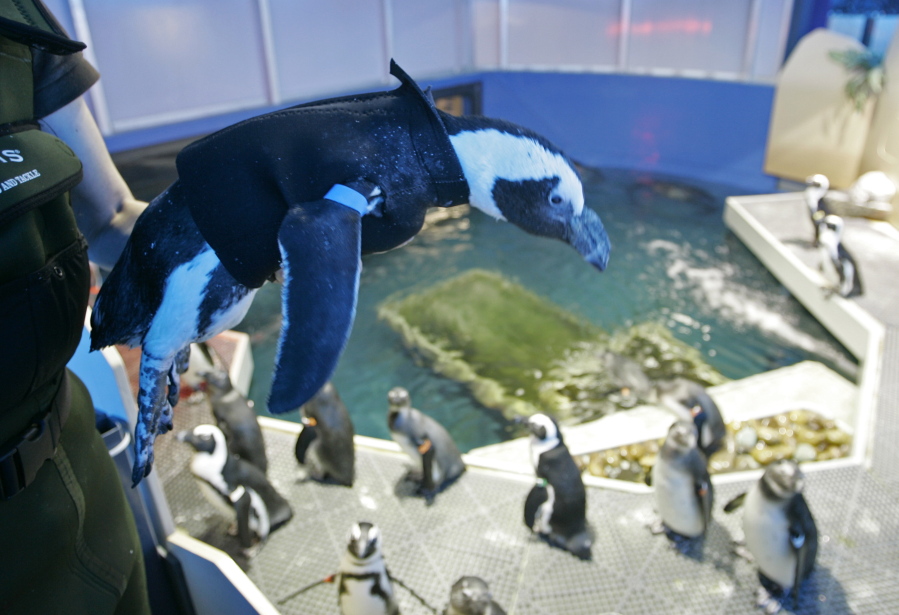SAN FRANCISCO — A San Francisco penguin that once sported a wetsuit after losing his feathers and who starred in a children’s book has died at the age of 33, officials said this week.
The California Academy of Sciences announced that Pierre the penguin, the oldest bird in the academy’s colony of African penguins, died recently from kidney failure.
In the wild, African penguins have an average lifespan of 15-20 years.
During his lifetime, Pierre had several mates with whom he produced 16 chicks, 27 grand-chicks, and 11 great grand-chicks. His lineage is represented worldwide. African penguins were classified as an endangered species in 2010 and are at very high risk of extinction in the wild.
In 2007, Pierre’s feathers didn’t grow back after a difficult molt. Without his waterproof feathers, Pierre had trouble keeping warm and the other birds in the colony began to pick on him.
Biologists designed a neoprene wetsuit for him and he wore the suit for several weeks in 2008 while his feathers grew back.
Shortly after Pierre, his mate Homey, and 18 other African penguins were introduced to their new home in Golden Gate Park, in the rebuilt California Academy of Sciences building where the colony resides today. Two years later, the story of Pierre’s wetsuit was published in a children’s book titled “Pierre the Penguin, A True Story.”
Pierre hatched on February 16, 1983 at The Maryland Zoo in Baltimore and was raised by his parents in Maryland until he was a juvenile. In June 1983, Pierre was sent to the California Academy of Sciences with 15 other African penguins to start the new penguin colony.
The academy’s African penguins are part of the Association of Zoos and Aquariums’ Species Survival Plan, aimed at maintaining genetic diversity of captive populations through controlled breeding and collaborative exchange of offspring among partner zoos and aquariums, said spokeswoman Kelly Mendez.



